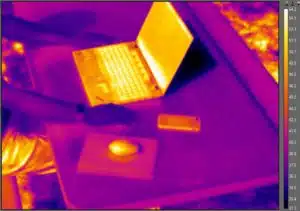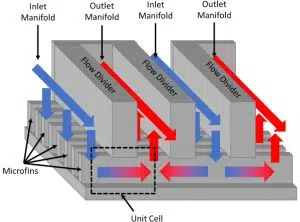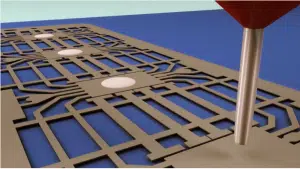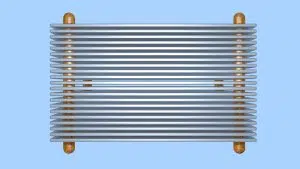Written by: Mark Hepokoski, ThermoAnalytics and Alex Ockfen, Meta Reality Labs Introduction ASHRAE defines thermal comfort as “that condition of mind that expresses satisfaction with the thermal environment” [1]. While engineers and designers are typically familiar with the thermal safety and compliance standards required in their industry [2], thermal comfort is less well … [Read more...]
Heat Transfer and Pressure Drop Correlations for Manifold Microchannel Heatsinks
Written by: Sevket U. Yuruker, Raphael K. Mandel, Amir Shooshtari and Michael M. Ohadi - Department of Mechanical Engineering, University of Maryland Conventional microchannel cooling has been proven capable of removing high heat fluxes, but usually at significant pressure drops. On the other hand, manifold microchannel systems offer high heat transfer coefficients/heat … [Read more...]
Breaking Grounds with Generative Design for Two-phase Cooling of Electronic Devices
Since the size of electronic components keeps on decreasing, the need for improved heat dissipation on these components keeps increasing. This dichotomy presents thermal engineers with a formidable challenge: how to design smaller coolers that dissipate more heat. Adding to the challenge, the fast-paced evolution of electronics means that the development time for the new cooler … [Read more...]
Electrically Conductive Die Attach Adhesive Has Very High Thermal Conductivity
In this video demonstration, learn more about EP3HTSDA-1, a thermally conductive die attach epoxy, and see how easily it dispenses. One component Master Bond EP3HTSDA-1 is formulated primarily for die attach applications. It exhibits a die shear strength of 20-22 kg-f and has a high thermal conductivity of 40-45 BTU•in/ft2•hr•°F [5.7-6.5 W/(m•K)]. “This 100% solids … [Read more...]
Statistic Corner: Comparing Populations
Introduction Previous articles in this series described the normal distribution and how it is used to relate probability and confidence levels [1, 2]. A practical application of the use of the confidence interval was to describe how to determine the range of values in which the true mean of a population falls within, based on the mean and standard deviation calculated from a … [Read more...]
- « Previous Page
- 1
- …
- 10
- 11
- 12
- 13
- 14
- …
- 75
- Next Page »










